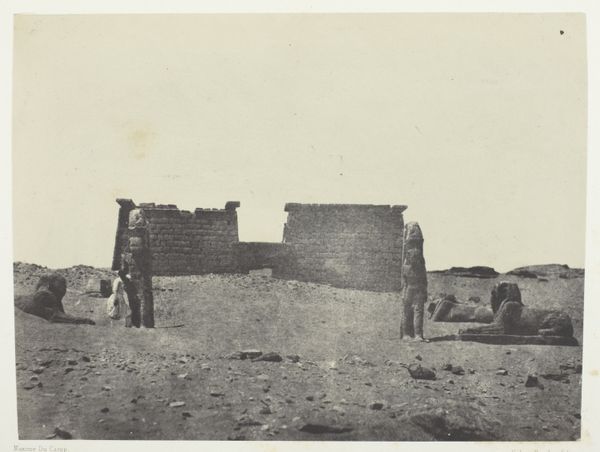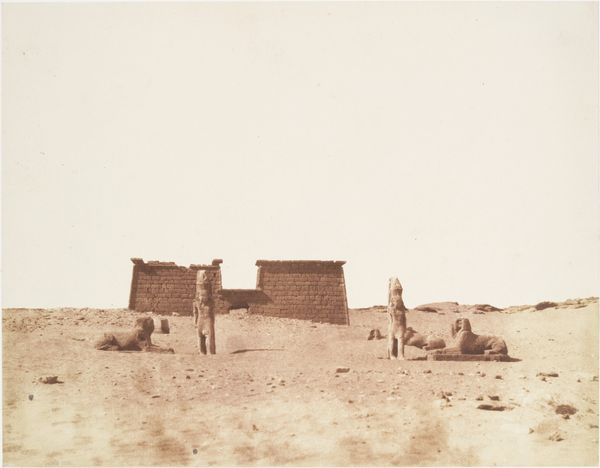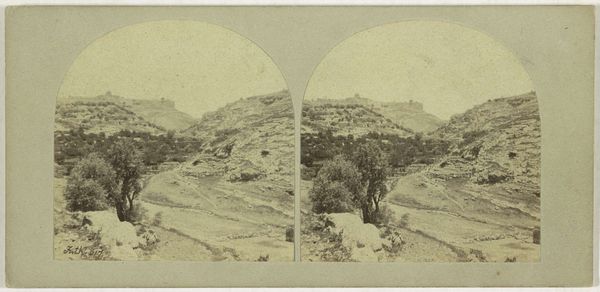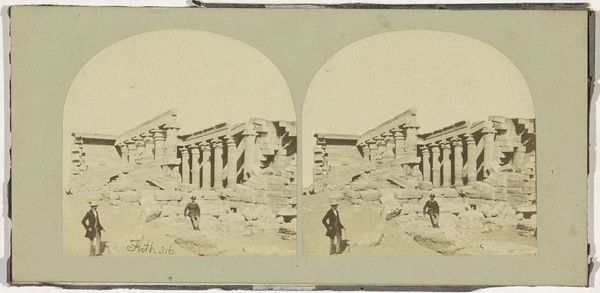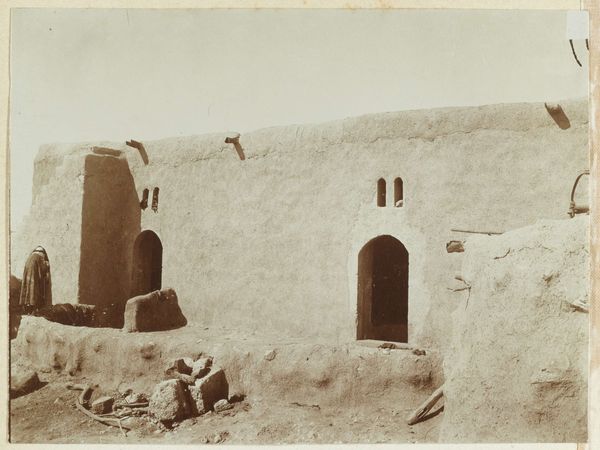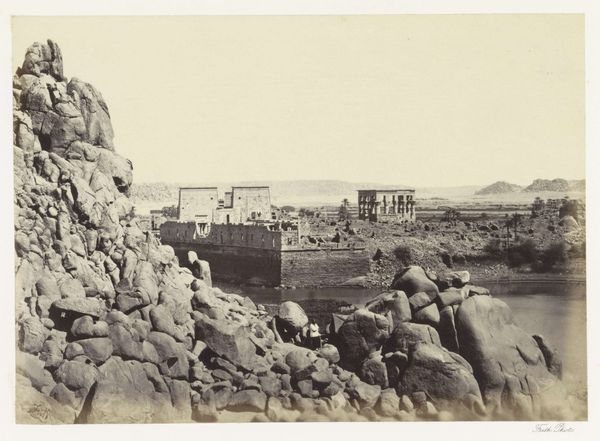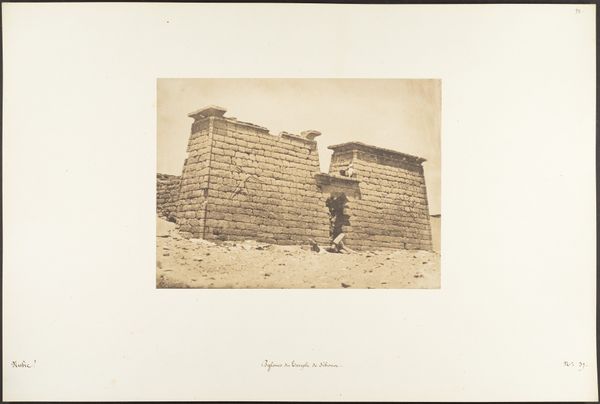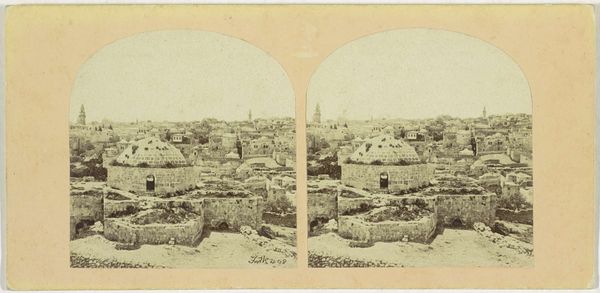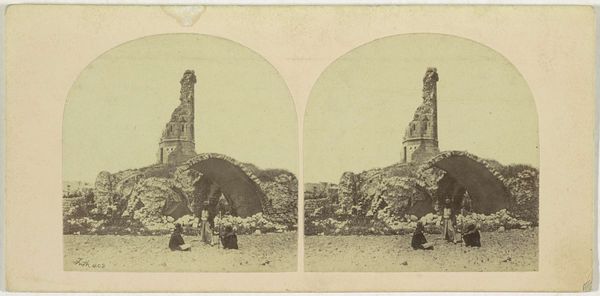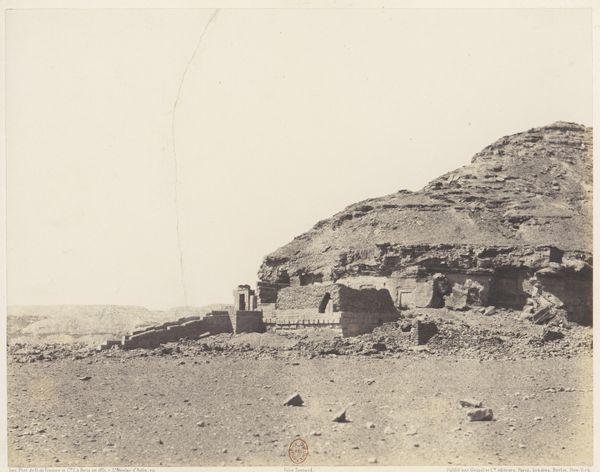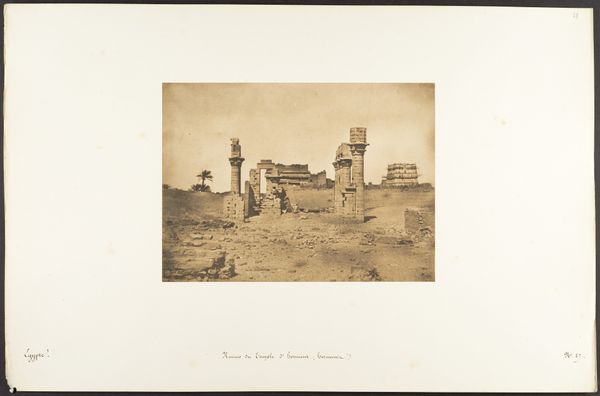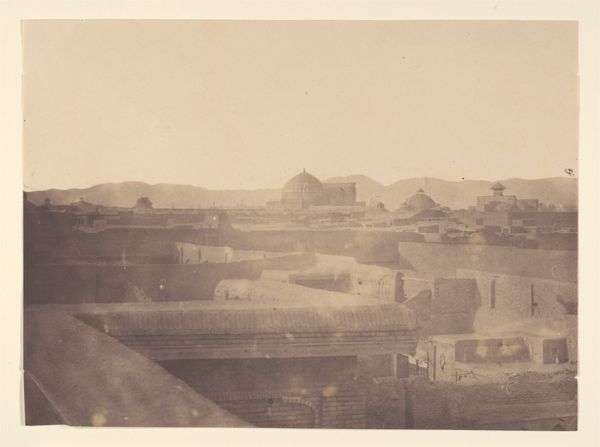
Kolossen en sfinxen bij de toegangsweg tot de tempel van Wadi es-Saboea, Egypte 1856 - 1860
0:00
0:00
photography, site-specific, albumen-print
#
landscape
#
ancient-egyptian-art
#
photography
#
ancient-mediterranean
#
site-specific
#
albumen-print
Dimensions: height 69 mm, width 70 mm, height 69 mm, width 69 mm, height 79 mm, width 171 mm
Copyright: Rijks Museum: Open Domain
This stereoscopic image of the temple of Wadi es-Saboea in Egypt was made by Francis Frith sometime in the mid-19th century. Using a twin-lens camera, Frith captured two nearly identical images on glass negatives, then printed them on albumen paper. The appeal of stereoscopic images was their almost uncanny ability to evoke a sense of presence. Here, the texture of the ancient stonework, the vastness of the desert landscape, and the figures of the tourists milling about are all rendered with remarkable clarity. But it's important to remember that images like these, while seemingly objective, were often carefully constructed to meet European expectations of the exotic Orient. The labor involved in creating these images – from the arduous journey to Egypt to the meticulous darkroom work – speaks to the growing commodification of travel and the increasing accessibility of distant lands to a burgeoning middle class, a direct product of industrialisation and colonial expansion.
Comments
No comments
Be the first to comment and join the conversation on the ultimate creative platform.
